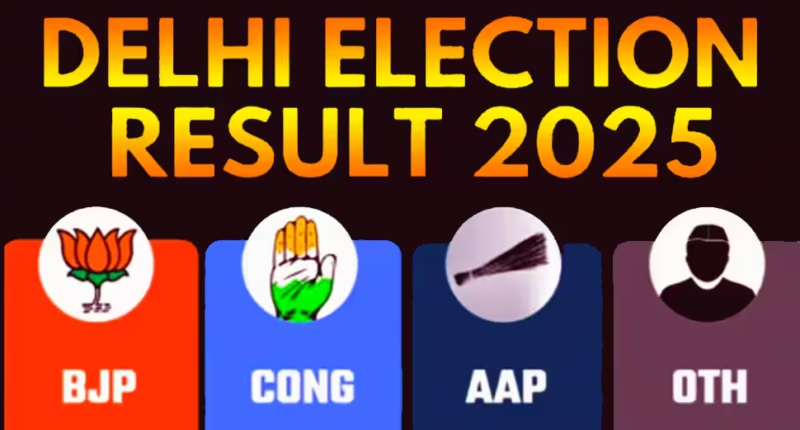Table of Contents Show
The 2025 Delhi Assembly elections have delivered a seismic shift in the capital’s politics. The Bharatiya Janata Party (BJP), after a 27-year drought, is set to form the government with a projected 45+ seats, while the Aam Aadmi Party (AAP) struggles to retain its stronghold with 21 seats. Congress, once a titan of Delhi politics, faces near-erasure with just one seat. This blog unpacks the drama, data, and dynamics behind this historic verdict.
Key Takeaways from the 2025 Delhi Election Results 13
- BJP’s Resurgence: Early trends show BJP leading in 45 seats, a stark contrast to its 8-seat tally in 2020.
- AAP’s Decline: Arvind Kejriwal’s party trails in critical bastions like New Delhi and Kalkaji.
- Congress’s Collapse: The party risks winning zero seats, highlighting its fading relevance.
- Voter Sentiment: Urban voters prioritized infrastructure and law-and-order over AAP’s welfare schemes.
- Caste Calculations: BJP’s upper-caste-heavy candidate list resonated with Delhi’s demographics 2.
Constituency-Wise Breakdown: Key Battlegrounds
1. New Delhi: Kejriwal’s Nail-Biting Fight
AAP’s Arvind Kejriwal initially trailed BJP’s Parvesh Verma but later surged ahead by 254 votes after postal ballots. Congress’s Sandeep Dikshit lagged with 12.5% vote share 112.
2. Kalkaji: CM Atishi’s Uphill Battle
BJP’s Ramesh Bidhuri leads against sitting CM Atishi, signaling AAP’s weakening grip on educated, middle-class voters 13.
3. Najafgarh: Three-Way Scramble
AAP’s Tarun Yadav faces stiff competition from BJP’s Neelam Pahalwan and Congress’s Sushma Yadav in this diverse constituency 4.
Caste Dynamics: The Silent Game-Changer 2
Delhi’s voter base is 35–40% upper-caste, dominated by Brahmins (13%), Rajputs (8%), and Vaishyas (7%). Both BJP and AAP fielded 45–48% upper-caste candidates, but BJP’s focus on Jats (14% tickets) and Gujjars (9%) paid dividends in rural belts.
Party-wise Ticket Allocation
| Caste Group | BJP | AAP | Congress |
|---|---|---|---|
| Upper Castes | 45% | 48% | 35% |
| OBCs | 20% | 25% | 30% |
| Dalits | 15% | 18% | 20% |
| Minorities | 0% | 7% | 10% |
Why Did AAP Lose? 5 Critical Factors
- Anti-Incumbency: Voters criticized uneven water/electricity subsidies and rising pollution.
- Corruption Allegations: Ongoing probes against AAP leaders eroded trust 9.
- BJP’s Hyper-Local Campaign: Focused on “Delhi First” infrastructure projects.
- Congress’s Vote Split: Minority votes fragmented, aiding BJP in 12 seats 1.
- Leadership Fatigue: Kejriwal’s national ambitions alienated local supporters.
What’s Next for Delhi? Policy Implications 9
- BJP’s Agenda: Metro expansion, stricter policing, and revisiting AAP’s freebies.
- AAP’s Survival: Rebranding as a national opposition force.
- Congress’s Existential Crisis: Potential mergers or leadership overhaul.
FAQs: Your Delhi Election Questions Answered
A: Visit the Election Commission’s website or trusted news portals like Times of India 11.
A: New Delhi, where Kejriwal and Verma traded leads multiple times 112.
A: Split votes, weak leadership, and lack of clear agenda 19.
A: Likely by February 12, post-result formalities 11.
Conclusion: A New Era for Delhi
The 2025 Delhi elections mark the end of AAP’s populist era and BJP’s triumphant return. As the capital braces for policy shifts, one thing is clear: Delhiites have voted for change. Stay tuned for deeper dives into coalition dynamics and emerging leaders!









